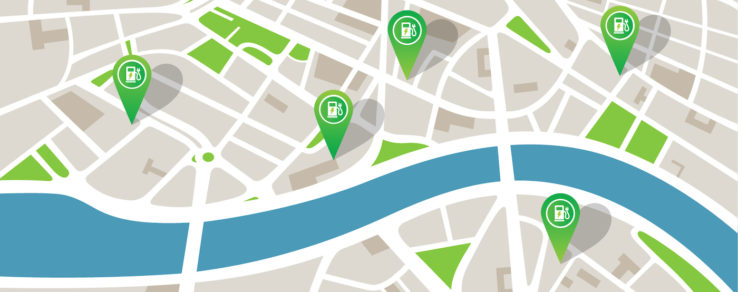Electric cars and trucks are nothing new. In fact, William Morrison of Des Moines, Iowa, built a six-passenger electric-powered wagon in 1891. Jumping ahead to just a few years later, of the 4,192 cars produced in the U.S. in 1900, 28% were electric. But electric vehicles (EVs) had disappeared by 1935 due to the discovery of Texas crude oil, the invention of the electric starter and mass production introduced by Henry Ford.
One of the main goals of EVs today is to replace petroleum, but reducing the cost of operation is an extra benefit. Burning petroleum consumes a finite resource and pollutes the atmosphere. While site emissions for electric vehicles is technically zero, the source emissions are still 30% less than gasoline combustion even considering 100% coal use for producing electricity from a power plant. Use of renewable solar or wind power reduces source emission by 100%.
Navigating barriers to EV adoption
What are the present barriers to EV adoption?
For starters, a price premium still exists averaging around $12,000 per electric vehicle. While fuel savings (electricity versus gasoline) will offset over $1,000 of that premium and a federal tax credit up to $7,500 could apply, it still takes about five years (70,000 miles) to obtain a simple financial payback.
The cost of batteries represents 30% to 40% of the total cost of EV production. Fortunately, that cost is steadily decreasing, now around $137/kWh of capacity. Bloomberg New Energy Finance forecasts EV battery prices to drop to $100/kWh in 2024 and $75/kWh by 2030, which would equal full parity with internal combustion engine (ICE) vehicles.
To combat this pricing barrier, roughly 35 states offer EV incentives of different types:
- $1,000 to $5,000 straight rebate (regardless of vehicle price)
- 50% to 80% of incremental cost (price premium) over non-EV
- 20% to 35% of the vehicle purchase price (cap limited)
- Exempt from state sales and use tax
The low cost of gasoline did not restrict EV sales much early on, especially for early adopters, but low fuel costs will affect the next group of buyers (early majority stage of technology adoption). In addition, states are reacting to the loss of fuel pump tax revenues by sending tax bills to EV owners based on the average miles travelled by ICE vehicles. While this is not unexpected, it could prove to be another deterrent to those seeking out EVs.
Perceived range anxiety is more fiction than fact. Many EVs today can go over 100 miles on a single charge while 50% of Americans travel less than 26 miles per day. In two years, the number of EV charging stations in the U.S. has doubled to 40,844 (offering 98,674 charging outlets). On-site charging stations are also very common for passenger cars and commercial fleet vehicles.
Faster charging speed and extended mileage is being enabled by technology such as silicon-carbide MOSFETs. Nickel-manganese-cobalt (NMC) lithium-ion batteries (used in about half of all EVs) provide the greatest capacity and power response but are prone to overheating. However, all electric vehicles incorporate a battery safety vent, current interrupter, and battery management system to minimize this risk.
The biggest barrier to EV adoption, however, is lack of public education. In an article from CleanTechnica, Steve Hanley observes, “Most dealers are doing a rotten job of promoting electric cars.” Although car manufacturers are equally to blame, he is steadfast that “there is no power on Earth that can force customers to buy an electric car until all of their questions have been answered.”
Answering questions about EVs is a role that utilities can play, especially in partnership with car dealerships, local governments, non-profit groups and car manufacturers. Energy utilities can work toward instant notification for permitting from the dealer, help governments streamline permitting and inspection processes for charging stations, offer financial or non-financial incentives and help emergency responders understand and address new safety concerns. Further guidance is available from the Clean Cities Community Electric Vehicle Readiness Projects.
EV market penetration is picking up speed
Despite these barriers, real or perceived, EVs are gaining a foothold. Close to 700,000 hybrid, plug-in and battery EVs were sold in each of the last three years in the U.S., with California among states and the Tesla brand among automobile manufacturers clearly dominating the market. Tesla alone sold nearly 200,000 Tesla 3, Y and X version battery electric vehicles (BEVs) in 2020, according to CleanTechnica. That is over 70% of all BEVs sold last year!
While there are only a dozen and a half passenger BEVs commercially available in the U.S. today, another dozen will be introduced this year or early next year, including large pickup trucks. The number of manufacturers offering medium- and heavy-duty commercial electric vehicles in the U.S. are increasing as well, including:
- Electric transit buses (5)
- Step-vans (3)
- Utility trucks (5)
- School buses (2)
- Waste management trucks (5)
- Long-haul and day-haul tractor trailers (5)
The future of EV adoption
What does the future hold for EV adoption? The major oil companies are rapidly displacing oil by adding renewable energy to their portfolios. Boston Consulting Group predicts the U.S. market will be driven by mild hybrid electric vehicles through 2025 and BEV volume through 2030, snagging 50% of all vehicle sales by 2030. Wood Mackenzie, however, predicts much lower EV sales per year for the U.S. (2.8 million), compared to China (5.3 million) and Europe (3.7 million), by 2030.
We do not know which prediction is more accurate, but we do believe that electric vehicles are here to stay. Ready to join the ride?

